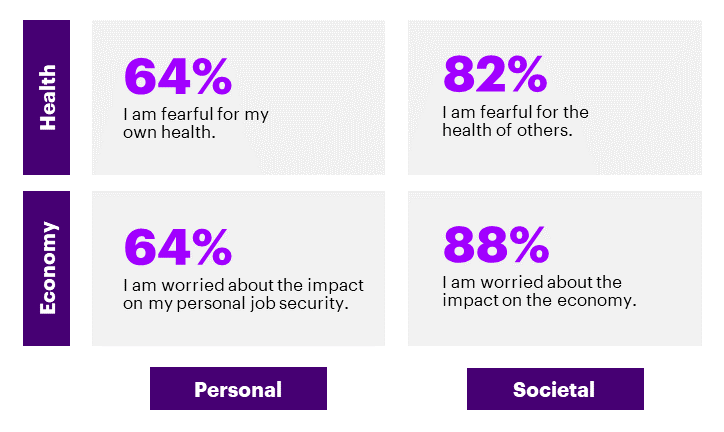Customers today access your business through a plethora of channels. This can be from your physical store, as well as online channels like a website, app, third-party marketplace, social media, or email. Given the multi-channel presence of your business, it is only fair of them to expect your customer support to be accessible seamlessly from all these different platforms as well.
Omnichannel customer support is a strategy that encompasses all the interactions your customer has with your business. It includes how you can interact with them, and how you can support them across multiple channels, including online, phone systems, and in-person.
It is the best way to serve your customers across multiple channels. This ensures that all your customers can access the same level of service and support regardless of where or how they purchase from you.
The key is that the customer must be able to access your business from any device and any location. They can do this whether they are online or offline.
Omnichannel customer support is a combination of different channels. The most common ones are:
- Website
- Mobile app
- In-store POS module or application
- Social media channels (Facebook, Twitter, Instagram, etc.)
- Email support
There are several reasons why you should execute an omnichannel customer support strategy:
- Customers access your business from multiple platforms — desktop, app, or in-store.
- They may have purchased from your retail store but may want to return online or vice-versa.
- Omnichannel customer support makes sure that your customer does not have to raise the same support request multiple times across different channels.
- It saves time in resolving a request and also improves customer experience exponentially.
Why Do Some Businesses Fail With Omnichannel Customer Support?
When it comes to customer support, many businesses struggle with the idea of providing a consistent experience across multiple channels.
Omnichannel customer support is more than just multi-channel — it’s about taking care of your customers wherever they are in their journey with your brand: whether they’re interacting with you through email or chat, visiting an online store, downloading an app, or calling in with a problem.
Most businesses treat omnichannel as merely multi-channel — that is taking support requests from different channels instead of truly unifying them.
Omnichannel customer support is about providing the best possible experience for your customers across all channels. It requires that you have a unified view of your customers and their needs, as well as a single set of tools that can be accessed by everyone at once. A great way to unify the multi-channels is to bridge the offline channels to the online channels. Directing your offline customers to your online channels can be an effective method of unifying multiple channels to provide efficient customer support. Using simple tools like QR codes can direct them to your online customer support, you can use the best QR code generators to create safe and unique codes easily and without any hassle.
The goal is to provide a seamless experience across channels so that customers can get their questions answered quickly, easily, and accurately. This means that you’ll need to make sure that every person in your company has access to the same information and tools.
The good news is that it’s easier than ever before to get started with omnichannel customer support. In fact, there are many tools like Canny or its alternatives available that make it easy to communicate with customers across different channels.
Here are a couple of examples:
- Email autoresponse templates — Most software products come with templates that can be used to respond quickly and efficiently to customer inquiries over email. This makes it easy for a customer service representative (CSR) to respond within minutes of receiving a query through email instead of having to work on their own time. You can also use these templates when responding via chat, phone, or social media channels.
- Customer service chatbots — Chatbots have become increasingly popular, as they can help businesses get instant answers to common questions and issues, even if they are not directly related to a product or service. They also provide a more personal interaction than calling a phone number, which can be helpful for people who prefer conversational interactions over written ones.
Businesses build different teams for different channels which results in them not ‘talking’ to each other. So, resolutions don’t happen promptly in a sea of confusion.
They don’t use the right communication channels. As a small business owner, you must invest in the right tools to grow your business. Support features need to be based on what customers prefer, and not based on what your support software currently offers.
Improving on a few key factors and truly establishing an omnichannel customer support system allows businesses to:
- Streamline the customer service process — reducing the number of steps and minimizing the number of times that customers need to repeat themselves when contacting a company.
- Make sure that all communication channels are connected — so that when someone contacts you by phone or email, they don’t have to wait for someone from the other channel to touch base with them first.
How To Get Omnichannel Support Right?
You’ve taken the first step to becoming an omnichannel retailer. Now, how do you get it right?
The answer is simple: you need a strategy that’s built around customer satisfaction and how your product or service can help them achieve their goals in life.
You can’t just start offering more services or products. You have to have a plan for how you’re going to deliver those services and products and make sure your customers are getting what they want out of them.
Omnichannel customer support is all about getting this right. It’s about making sure your customers aren’t just getting one kind of customer service, but four different kinds:
- Physical retail — where the customer walks in and sees you, talks to an associate, and buys something.
- Online store — where they buy online from your website.
- On-demand app — where they download a mobile app and use it to access your content or services.
- Social media — where they use social media channels such as Facebook or Twitter to get in touch with you and resolve their issues.
The key to executing an omnichannel customer support strategy is to start by identifying the different types of customers you serve. This may seem like a lot of work, but it’s crucial to providing the best experience for your customers, especially if you’re managing multiple channels.
When you’re doing this research, be sure to analyze your own customers’ behaviors as well as those of other companies that serve similar customers. You’ll want to know what they’re doing and how they’re doing it — whether they buy from you regularly, for instance — and why. In addition, these insights will help you develop a plan for how you’ll provide specific types of customer service across all your channels.
Then you must set up a companywide process for handling customer inquiries. This should include guidelines on how long it takes anyone in your organization to respond — whether someone replies within 24 hours or longer than that — as well as specific instructions about what type of information customers need to provide before they get a reply. Also include information about what happens if there are multiple people involved in responding to an inquiry.
To ensure that you have a well-oiled customer support team, it’s important to have a centralized support desk that all members of all the different channels access for filing complaints. This can be done by having agents file requests through one platform for each channel. The platform should have an easy-to-use interface where agents can easily fill out any queries and submit them in one place.
To make sure that your agents are trained on a standard format and template for filing requests, make sure that they know what to do when they receive a query from a customer. For standardization, also ensure that agents don’t have to type in different rows. Instead, use dropdowns — this way, data is kept more organized and helps when looking for complaints within a specific category.
Omnichannel customer support is not just about being accessible across channels, but also about being able to execute the same processes and understanding the customer’s needs across all channels.
This requires training the support team to follow specific protocols while raising and updating new requests.
For example, starting a conversation by asking the customer’s phone number could help retrieve required past information (orders, support requests, etc.) instantly instead of hearing out their complaint, then asking for details — since that’s more frustrating for the customer (if they have already told the story to other agents before).
Make it easy to communicate across channels. This includes allowing voice notes on WhatsApp or live chat channels, not responding from a no-reply email, etc.
Another way is to use a messaging system that allows for an automatic response when you reach out. For example, if you send an email, the system will send a message saying “we’re looking into this” and wait for a response before sending another email.
Also, make sure that you have clear communication standards so that all of your employees know what is expected of them in terms of tone and style of communication.
How To Hire The Right Support Staff?
Omnichannel customer support is one of the biggest growth drivers in the modern business environment. It’s not only because it makes your business more scalable, but also because it allows you to provide more personalized services to your customers.
The first step toward executing an omnichannel strategy is to hire the right support staff. You need a team that understands different technologies and channels.
For example, if you run a social media campaign for your brand, then you need someone who can handle Twitter accounts, Facebook pages, Instagram, and other social media platforms. You also need someone who understands how email works.
To make sure you get the right people for your team, here are some tips:
- Use e-learning modules to train them on different customer support channels. This will help them learn about each channel’s features and benefits so they can use it efficiently without having any problems with their workflow. Make them go through the different channels so they know how each of them works.
- Make sure that they have experience in the field of customer care and are familiar with the different types of customers that they will be dealing with. For example, if you have a retail company and want to expand your business in the consumer market, then hiring people who have experience with consumer-based companies will be beneficial.
- You must hire people who are adept at multitasking so that they can handle multiple duties without having to spend too much time on any one task. This can help ensure that your customers get their questions answered quickly as possible while also making sure that no customers get lost in the shuffle.
- Make sure that your new hires have good communication skills because this will help them work more effectively with your customers by making it easier for them to understand what they need from you and how best to deliver it.
Now your customers are even more likely to receive a high level of service and won’t have to deal with strange glitches or the dreaded “call center” experience, simply because you have an omnichannel strategy in place. The best way to execute your omnichannel strategy isn’t necessarily by increasing your team size or signing up for a new support platform, but rather by taking the time to clearly identify your goals and refining your service process so that it actually works.




